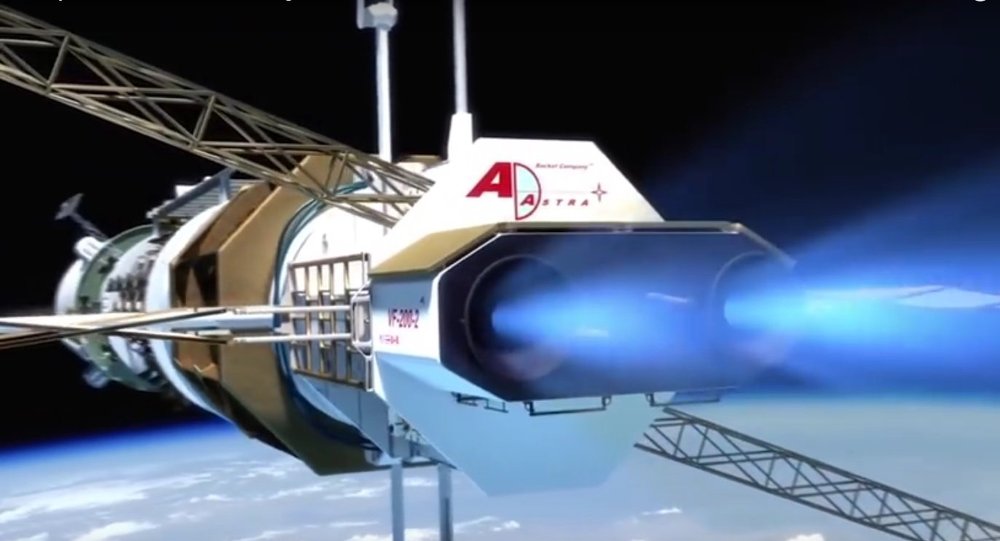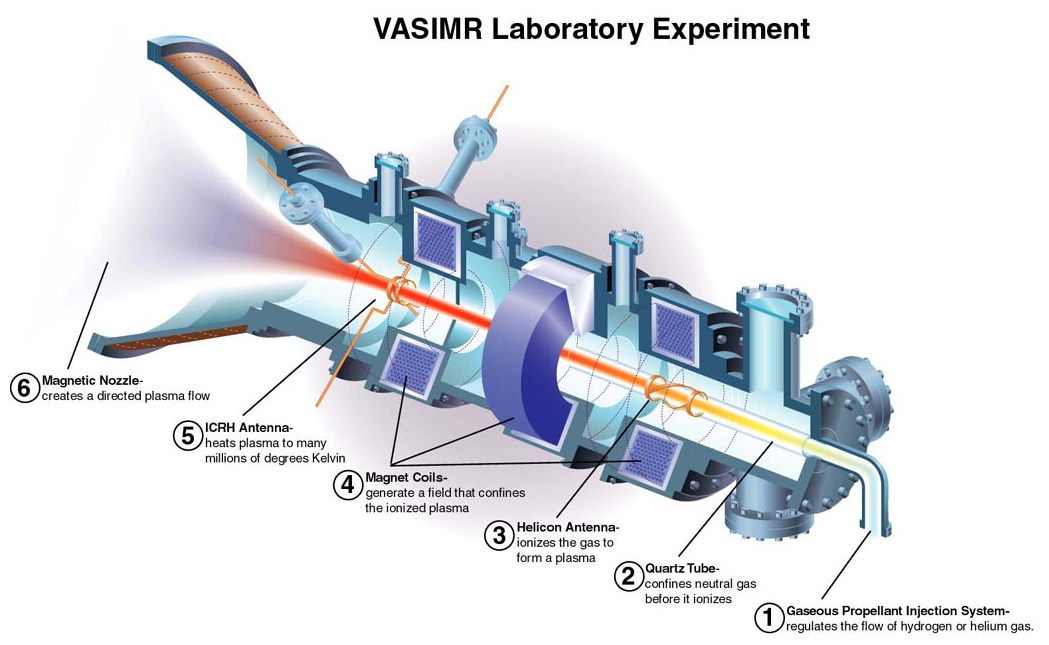NASA recently delivered $10 million in funding to Ad Astra Rocket Company of Texas for further development of its Variable Specific Impulse Magnetoplasma Rocket (VASIMR), an electromagnetic thruster proficient of propelling a spaceship to Mars in just 39 days. NASA’s funding was part of the “12 Next Space Technologies for Exploration Partnership.”

Ad Astra’s rocket will travel ten times quicker than today’s chemical rockets while using one-tenth the amount of fuel.

The VASIMR system would cut the trip to Mars by months according to Franklin Chang Diaz, a former MIT student, NASA astronaut, and now CEO of Ad Astra.
According to Diaz, “this is like no other rocket that you may have seen in the past. It is a plasma rocket. The VASIMR Rocket is not used for launching things; it is used for things already in orbit. This is called “in-space propulsion.”
VASIMR heats plasma, an electrically charged gas, to exceptionally high temperatures using radio waves. The system then offers thrust by funneling the hot plasma out of the back of the engine. According to Diaz, VASIMR will save thousands of gallons of rocket fuel and tens of millions of dollars a year.
This engine is truly amazing and can help us in exploring space a lot. Ultimately this will help us reaching the outer skirts of our solar systems. This is one of a kind.

In the following video, Diaz explains in great detail the origins of space travel and why the magneto plasma rocket technology will transform space travel and exploration.








 Photographer Finds Locations Of 1960s Postcards To See How They Look Today, And The Difference Is Unbelievable
Photographer Finds Locations Of 1960s Postcards To See How They Look Today, And The Difference Is Unbelievable  Hij zet 3 IKEA kastjes tegen elkaar aan en maakt dit voor zijn vrouw…Wat een gaaf resultaat!!
Hij zet 3 IKEA kastjes tegen elkaar aan en maakt dit voor zijn vrouw…Wat een gaaf resultaat!!  Scientists Discover 512-Year-Old Shark, Which Would Be The Oldest Living Vertebrate On The Planet
Scientists Discover 512-Year-Old Shark, Which Would Be The Oldest Living Vertebrate On The Planet  Hus til salg er kun 22 kvadratmeter – men vent til du ser det indvendigt
Hus til salg er kun 22 kvadratmeter – men vent til du ser det indvendigt  Superknepet – så blir snuskiga ugnsformen som ny igen!
Superknepet – så blir snuskiga ugnsformen som ny igen!  Meteorite That Recently Fell in Somalia Turns Out to Contain Two Minerals Never Before Seen on Earth
Meteorite That Recently Fell in Somalia Turns Out to Contain Two Minerals Never Before Seen on Earth  Nearly Frozen Waves Captured On Camera By Nantucket Photographer
Nearly Frozen Waves Captured On Camera By Nantucket Photographer  It’s Official: Astronomers Have Discovered another Earth
It’s Official: Astronomers Have Discovered another Earth 